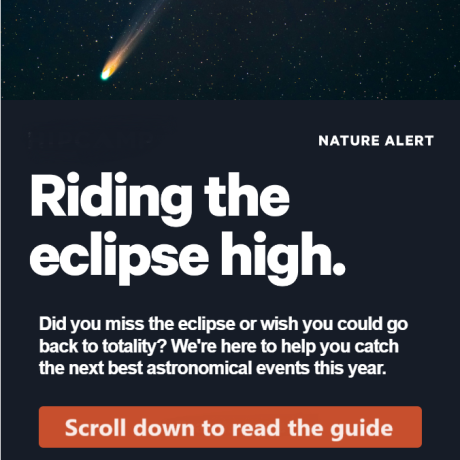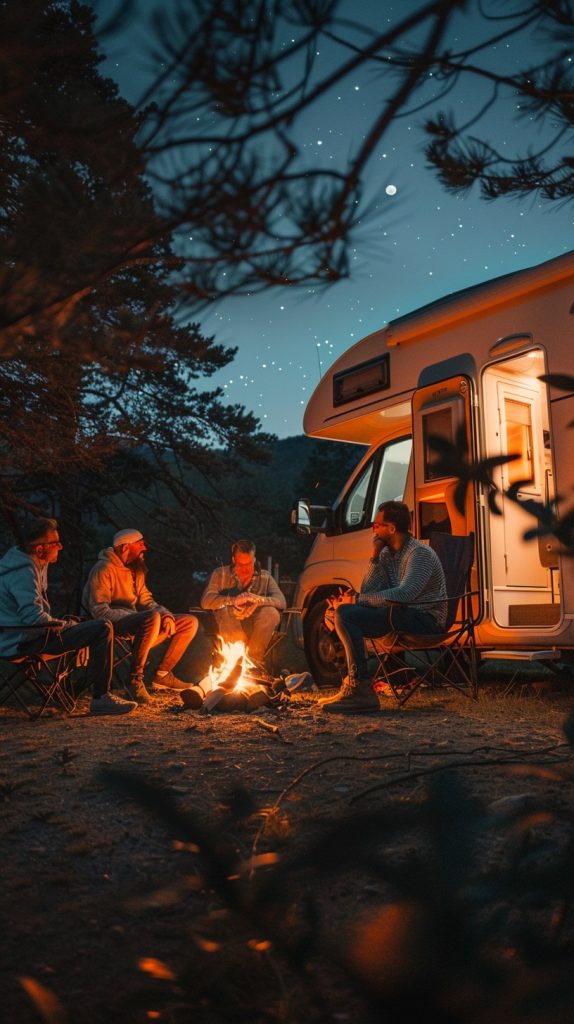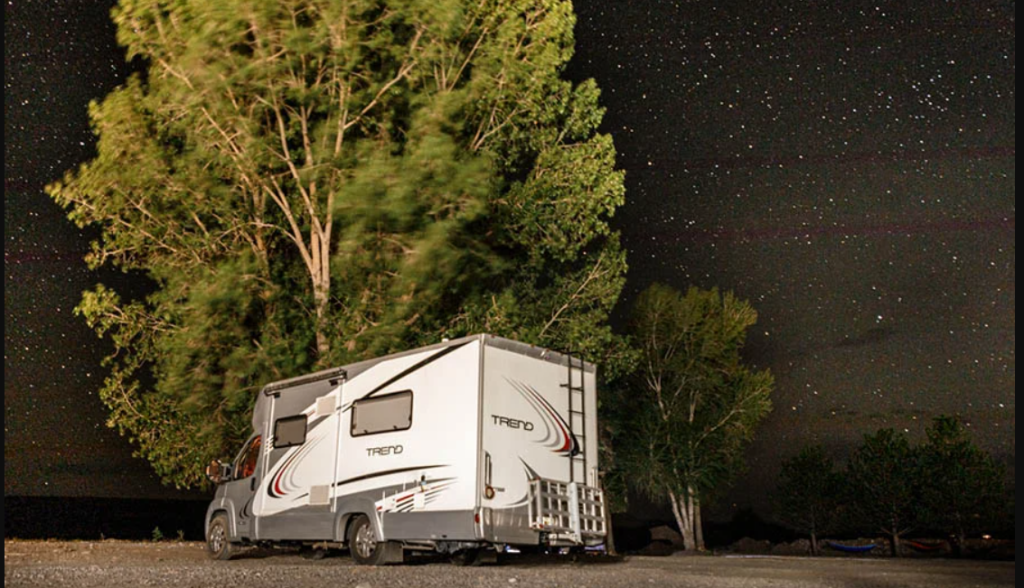Didn’t catch the 2024 Total Eclipse?
Check out these other celestial events throughout the rest of 2024!
May
☄️ Sun.–Tues. May 5–7 | Eta Aquarid Meteor Shower: Producing up to 50 meteors per hour at its peak, the Eta Aquarids are typically one of this year’s best showers. This week’s new moon will make the show even better with especially dark skies—it’s worth escaping the city for this one. The shooting stars are produced by dust particles from Halley’s Comet. This meteor shower will be especially good in Australia.
🌑 Wed. May 8 | New Moon: The first phase of the lunar calendar, new moons occur when the sun and moon are aligned. The moon is therefore invisible from Earth, creating the darkest sky of the month—perfect for camping trips out to observe the brightest stars and see the Milky Way.
- Northern Hemisphere constellations to see: Virgo
- Southern Hemisphere constellations to see: Virgo, Musca, Centaurus
🪐 Thurs. May 9 | One of the best times to view Mercury: Known as the time when Mercury will be at its “greatest western elongation,” this is one of the best times to get a good look at this planet all year! You should be able to see it low in the sky right before sunrise.
🌕 Thurs. May 23 | Full Moon (aka the Flower Moon): Full moons occur when Earth is located between the sun and moon, making the moon appear fully illuminated from Earth. It can be more difficult to see constellations with a bright full moon, but it does make for great moonlit hikes and family camping trips.
June
🌑 Thurs. June 6 | New Moon: The first phase of the lunar calendar, new moons occur when the sun and moon are aligned. The moon is therefore invisible from Earth, creating the darkest sky of the month—perfect for camping trips out to observe stars and see the Milky Way.
- Northern Hemisphere constellations to see: Sagittarius, Hercules, Draco
- Southern Hemisphere constellations to see: Scorpius, Ara, Ophiuchus
☀️❄️ Thurs. June 20 | June Solstice: In the Northern Hemisphere, it’s the longest day of the year and the start of summer, and in the Southern Hemisphere, it’s the shortest day of the year and the start of winter. This is due to the North Pole tilting away from the sun, and the South Pole tilting toward it.
🌕 Sat. June 22 | Full Moon (aka the Strawberry Moon): Full moons occur when Earth is located between the sun and moon, making the moon appear fully illuminated from Earth. It can be more difficult to see constellations with a bright full moon, but it does make for great moonlit hikes and family camping trips.
July
🌑 Fri. July 5 | New Moon: The first phase of the lunar calendar, new moons occur when the sun and moon are aligned. The moon is therefore invisible from Earth, creating the darkest sky of the month—perfect for a 4th of July camping trip out to observe stars and see the Milky Way.
- Northern Hemisphere constellations to see: Lyra, Sagitta, Aquila
- Southern Hemisphere constellations to see: Sagittarius, Corona Australis, Pavo
🌕 Sun. July 21 | Full Moon (aka the Buck Moon): Full moons occur when Earth is located between the sun and moon, making the moon appear fully illuminated from Earth. It can be more difficult to see constellations with a bright full moon, but it does make for great moonlit hikes and family camping trips.
🪐 Mon. July 22 | One of the best times to view Mercury: Known as the time when Mercury will be at its “greatest eastern elongation,” this is one of the best times to get a good look at this planet all year! You should be able to see it low in the sky just after sunset.
☄️ Mon.–Wed. July 29–31 | Delta Aquarid Meteor Shower: The Delta Aquarids are fairly average, and conditions this year will be less than ideal given the peak’s timing during a 40% full moon. Try your luck in a dark-sky location after midnight.
August
🌑 Sun. August 4 | New Moon: The first phase of the lunar calendar, new moons occur when the sun and moon are aligned. The moon is therefore invisible from Earth, creating the darkest sky of the month—perfect for camping trips out to observe stars and see the Milky Way.
- Northern Hemisphere constellations to see: Delphinus, Vulpecula, Cygnus
- Southern Hemisphere constellations to see: Capricornus, Indus, Microscopium
☄️ Mon. & Tues. Aug 12-13 | Perseid Meteor Shower: The Perseids are one of the best meteor showers of the year, especially in the Northern Hemisphere! Amateur astronomers should wait until the moon sets around midnight for the best shot at spotting up to 100 shooting stars per hour (that’s multiple per minute!) during this show. Before midnight, the half-full moon will make it harder to see the shooting stars.
🌕 Mon. August 19 | Full Moon (aka the Sturgeon Moon), Blue Moon: A “blue moon” typically refers to the second full moon in a calendar month (as in, “once in a blue moon…”), but this blue moon gets its name because it is the third full moon in a season with four full moons. This only happens every 2.5 years, but sadly, the moon will not actually be blue. The more you know!
Full moons occur when Earth is located between the sun and moon, making the moon appear fully illuminated from Earth. It can be more difficult to see constellations with a bright full moon, but it does make for great moonlit hikes and family camping trips.
September
🌑 Tues. September 3 | New Moon: The first phase of the lunar calendar, new moons occur when the sun and moon are aligned. The moon is therefore invisible from Earth, creating the darkest sky of the month—perfect for camping trips out to observe stars and see the Milky Way.
- Northern Hemisphere constellations to see: Pegasus, Lacerta
- Southern Hemisphere constellations to see: Aquarius, Grus, Piscis Austrinus
🪐 Thurs. September 5 | One of the best times to view Mercury: Known as the time when Mercury will be at its “greatest western elongation,” this is one of the best times to get a good look at this planet all year! You should be able to see it low in the sky right before sunrise.
🪐Sun. September 8 | Best time to view Saturn: When Saturn is in opposition, it’s at its closest to Earth and its very brightest, visible all night. You’ll be able to see it as a yellow dot with your naked eye, but a telescope is required to see its rings.
🔴 Night of Tues. September 17 | Partial Lunar Eclipse: A partial lunar eclipse occurs when the moon passes through the earth’s penumbra (partial shadow), and only a portion of it passes through the umbra (darkest shadow). This means that for about an hour, part of the full moon will go dark as it passes through the earth’s shadow. All of North America and the UK will see it—US East Coasters should look up starting at 10:12pm ET before the peak at 10:44pm ET.
🌕 Wed. September 18 | Full Moon (aka the Harvest Moon), Supermoon: This supermoon will appear slightly larger in the sky—and it’s the first of 2024’s three supermoons. Full moons occur when Earth is located between the sun and moon, making the moon appear fully illuminated from Earth. It can be more difficult to see constellations with a bright full moon, but it does make for great moonlit hikes and family camping trips.
🍂🌷 Sun. September 22 | September Equinox: In the Northern Hemisphere, it’s the first day of fall, and in the Southern Hemisphere, it’s the first day of spring.
October
🌑 Wed. October 2 | New Moon: The first phase of the lunar calendar, new moons occur when the sun and moon are aligned. The moon is therefore invisible from Earth, creating the darkest sky of the month—perfect for camping trips out to observe stars and see the Milky Way.
- Northern Hemisphere constellations to see: Pisces, Cassiopeia, Cepheus
- Southern Hemisphere constellations to see: Phoenix, Tucana, Sculptor
☄️ Mon.–Wed. October 7–9 | Draconid Meteor Shower: October sees two meteor showers, the first being the Draconids. Head out in the early evening, and hope for a cloudless sky to see this minor shower. Expect only up to 10 meteors per hour.
🌕 Thurs. October 17 | Full Moon (aka the Hunter’s Moon): Full moons occur when Earth is located between the sun and moon, making the moon appear fully illuminated from Earth. It can be more difficult to see constellations with a bright full moon, but it does make for great moonlit hikes and family camping trips.
☄️ Sun.–Tues. October 20–22 | Orionid Meteor Shower: The second meteor shower in October and the better of the two (though still just average at 20 meteors an hour), the Orionids appear due to debris left by Halley’s Comet, just as is the case with the Eta Aquarids in May. It’s said that the Orionids are best seen near the Orion constellation, though this year, the nearly full moon may put a damper on the light show. Head out after midnight for your best shot.
November
🌑 Fri. November 1 | New Moon: The first phase of the lunar calendar, new moons occur when the sun and moon are aligned. The moon is therefore invisible from Earth, creating the darkest sky of the month—perfect for camping trips out to observe stars and see the Milky Way.
- Northern Hemisphere constellations to see: Aries, Perseus
- Southern Hemisphere constellations to see: Horologium, Eridanus
☄️ Mon.-Tues. Nov 4-5 | Taurid Meteor Shower: Producing up to 10 meteors per hour, this is only a minor meteor shower but still a great reason to find yourself outside under the stars. The new moon will also help the meteors stand out!
🌕 Fri. November 15 | Full Moon (aka the Beaver Moon), Supermoon: This supermoon will appear slightly larger in the sky. Full moons occur when Earth is located between the sun and moon, making the moon appear fully illuminated from Earth. It can be more difficult to see constellations with a bright full moon, but it does make for great moonlit hikes and family camping trips.
🪐 Sat. November 16 | One of the best times to view Mercury: Known as the time when Mercury will be at its “greatest eastern elongation,” this is one of the best times to get a good look at this planet all year! You should be able to see it low in the sky just after sunset.
☄️ Sat.-Mon. November 16–18 | Leonid Meteor Shower: The Leonids typically produce up to 20 meteors per hour. During this weekend peak, visibility will be disappointingly low due to the moon, but those in the Southern Hemisphere have a better shot at clear weather. Be patient!
December
🌑 Sun. December 1 | New Moon: The first phase of the lunar calendar, new moons occur when the sun and moon are aligned. The moon is therefore invisible from Earth, creating the darkest sky of the month—perfect for camping trips out to observe stars and see the Milky Way.
- Northern Hemisphere constellations to see: Ursa Minor, Ursa Major
- Southern Hemisphere constellations to see: Taurus, Orion
☄️ Thurs. & Fri. December 13–14 | Geminid Meteor Shower: Producing up to 120 meteors per hour at its peak, the Geminids are one of the strongest meteor showers to see all year. Unfortunately for 2024, the shower peaks during a bright full moon, dimming most meteors you’d otherwise see. Despite these less than perfect conditions, you’ll still have a shot at spotting some shooting stars with a bit of patience after midnight.
🌕 Sun. December 15 | Full Moon (aka the Cold Moon): Full moons occur when Earth is located between the sun and moon, making the moon appear fully illuminated from Earth. It can be more difficult to see constellations with a bright full moon, but it does make for great moonlit hikes and family camping trips.
❄️☀️ Sat. December 21 | December Solstice: In the Northern Hemisphere, it’s the shortest day of the year and the start of winter, and in the Southern Hemisphere, it’s the longest day of the year and the kickoff to summer. This is due to the North Pole tilting away from the sun, and the South Pole tilting toward it.
☄️ Sat. & Sun. December 21–22 | Ursid Meteor Shower: Producing 5 to 10 meteors per hour, the Ursids are a fairly minor showing, and the half-full moon phase isn’t great for spotting them. Even still, visiting a dark sky spot and looking up after sunset until moonrise will give you the best chance of seeing the last shower of the year.
Start planning your next adventure by booking a campsite at Hidden Valley RV Park near San Antonio, Texas for stargazing in time for a celestial event.


